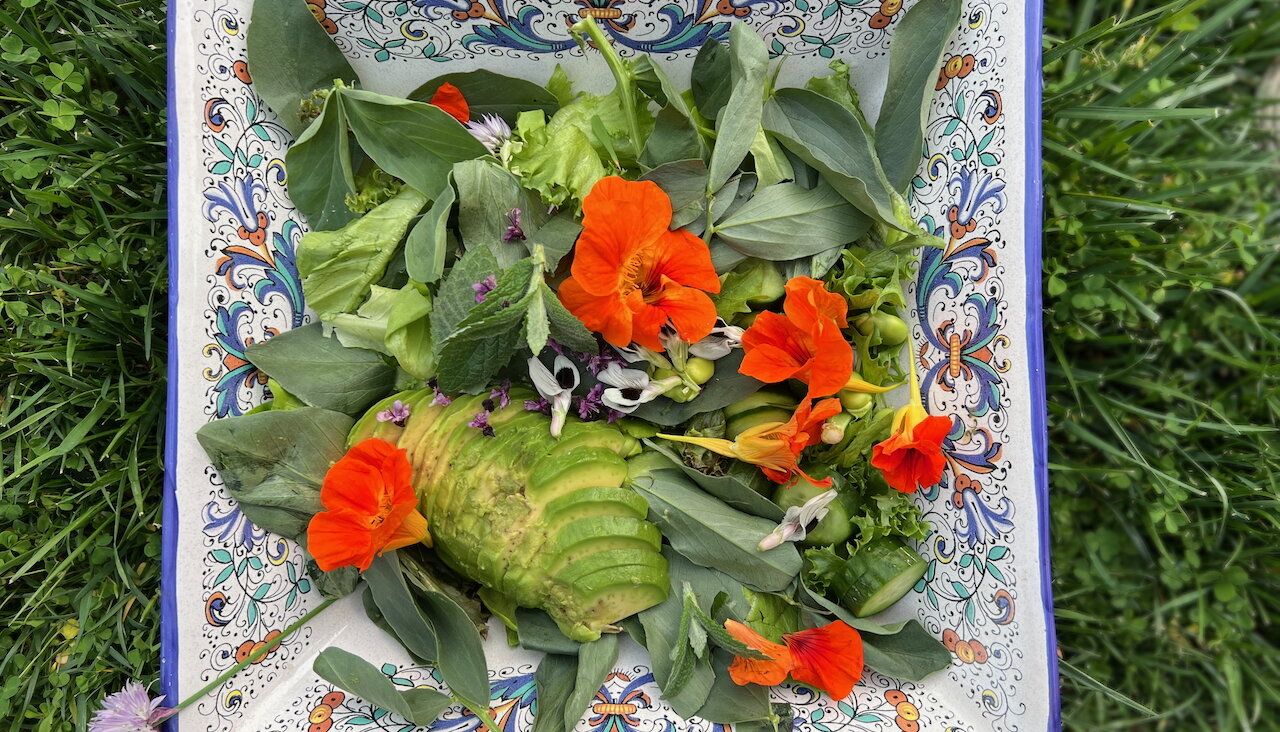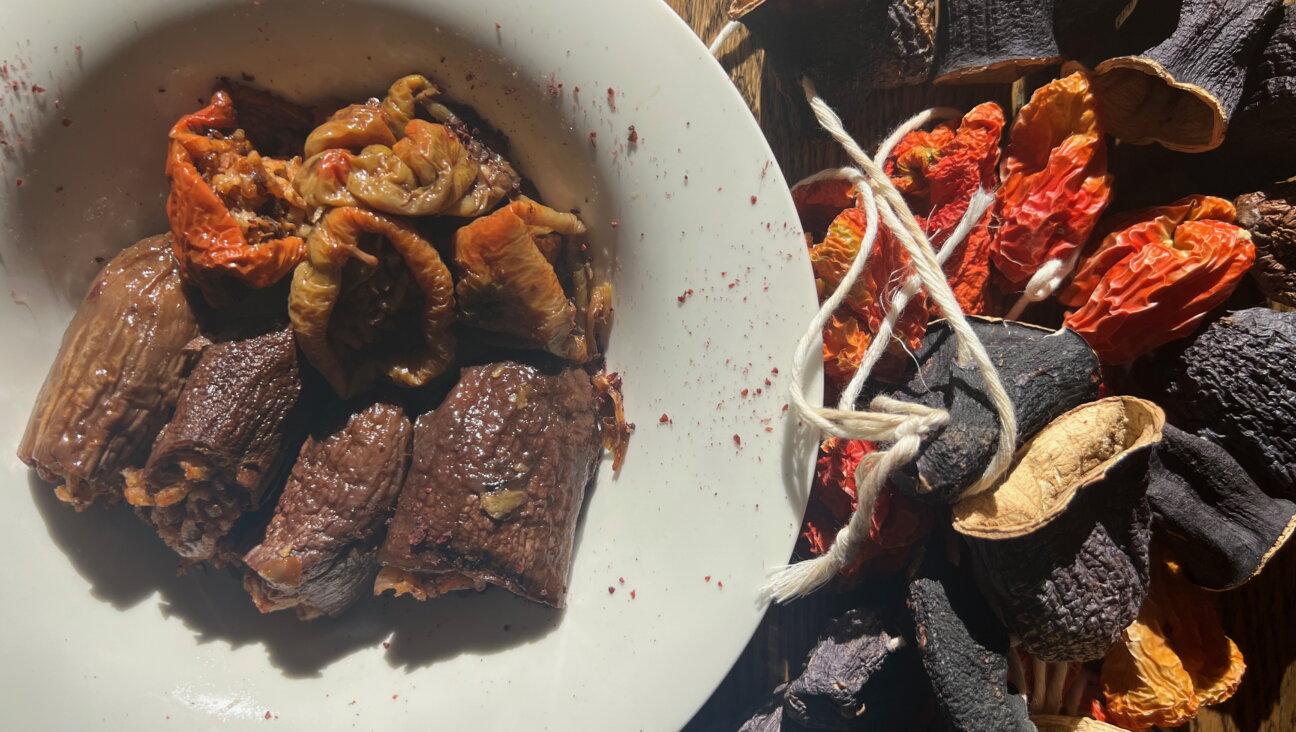Every Mushroom Is Edible — But Some Only Once

Chanterelle? If you can’t tell, leave it alone. Image by Flickr

Beautiful — but is it deadly? Image by Flickr
Back in the days when hunting and gathering were the predominant methods of obtaining food, being able to distinguish the edible from the toxic was a skill that people found necessary to develop for the sake of sheer survival. Over the millennia, that skill was transmitted from generation to generation in every civilization, including to our ancestors who, whether in Eastern Europe or the Middle East, headed out to forest and field to forage for wild edibles. For many, scavenging for nuts, berries and mushrooms was how they supplemented their diets in hardscrabble circumstances.
Related Recipe
Watch
Learn how to make mushroom-barley soup step by step — in Yiddish!
Today, many cultures around the world still stock their larders in this time-honored way, passing down the ability to identify and prepare wild edibles. Unfortunately, I, like many fellow members of the tribe, have lost that skill. So I set out to rectify my missing link, and have been signing up for workshops with experts here in New England. First up was a mushroom forage.

Morel mushrooms — or are they? Image by Flickr
“Every mushroom is edible, but some only once,” according to a wise old Czech saying. Indeed, some mushrooms are deadly while others that are not lethal can nevertheless cause permanent organ damage, so the first lesson I learned was that beginning foragers should take extreme care when deciding whether to eat their finds. The safest route to successful, healthful mushrooming is to go out with an expert and search through three reliable field guides to ensure that what you are picking is indeed okay.
But, no need to throw up your hands and head out to the Stop & Shop. Several mushroom species are not only delicious, but are easily identified and not easily confused with other, more toxic varieties. Among the most popular of these are hen of the woods, chicken of the woods (yes, those are totally different fungi), bear’s head tooth and oyster mushrooms (the closest thing to treyf this Jewess will get to eat). Our expert suggested learning one new mushroom every year.

Chanterelle? If you can’t tell, leave it alone. Image by Flickr
I am told that one can find mushrooms throughout the woods, some directly in the ground, some perched on fallen logs, still others growing under certain species of trees. While it would indeed be helpful to be able to identify those trees where mushrooms are wont to grow, I found it hard to look for them while holding on for dear life on a muddy and slippery forest floor littered with fallen trees and saplings whose branches could take out an eye. Although our guide had instructed us, “Three steps, stop and look; three steps, stop and look,” this method was not only tedious but left us far behind the man who was supposed to be leading us. Taking out an eye or getting lost in the woods seemed to be my choices.
Due to the very dry spring and summer, pickings were slim this year. Our group found precisely one oyster mushroom that day. The lucky girl had plans to cook it up with onion and egg. On my second outing, one member of the group happened upon a member of the boletus family of fungi. Luckily, he had the presence of mind to show it to our expert, who then demonstrated that it was poisonous by snapping it in half. Like something out of a Harry Potter novel, it magically turned blue. Dazzling but deadly.
Not to worry. Now that I know how to identify a few safe varieties, I can go out into the woods on my own. And then check with an expert.

Not sure if it’s poisonous? Ask an expert. Image by Flickr
For the avid fungiphile who isn’t put off by the cold, mushroom hunting doesn’t have to end just because winter has arrived. Some varieties of mushroom, such as the nametake, can survive a freeze and keep on growing. Just look for a fallen elm in the woods, and you might just find the ingredients for a really special dinner.
A few pointers if you do go out: Dress appropriately, with hiking boots, hat, long sleeves and in warmer months, bug spray and sunscreen. Bring a basket or paper bag to hold your harvest. Plastic can trap moisture that can spoil the mushrooms. And check with an expert.
Sure, you can buy mushrooms at your local grocer’s, but there is nothing as satisfying as finding your own. It can connect you with your ancestors in a different, down-to-earth way.
Related Recipe
Watch
Learn how to make mushroom-barley soup step by step — in Yiddish!
Carol Goodman Kaufman is the travel and food columnist for the Berkshire Jewish Voice and the Jewish Leader of Connecticut and Rhode Island, and a regular contributor to Boston’s Jewish Advocate.
The Forward is free to read, but it isn’t free to produce

I hope you appreciated this article. Before you go, I’d like to ask you to please support the Forward.
Now more than ever, American Jews need independent news they can trust, with reporting driven by truth, not ideology. We serve you, not any ideological agenda.
At a time when other newsrooms are closing or cutting back, the Forward has removed its paywall and invested additional resources to report on the ground from Israel and around the U.S. on the impact of the war, rising antisemitism and polarized discourse.
This is a great time to support independent Jewish journalism you rely on. Make a gift today!
— Rachel Fishman Feddersen, Publisher and CEO
Support our mission to tell the Jewish story fully and fairly.
Most Popular
- 1

Fast Forward Ye debuts ‘Heil Hitler’ music video that includes a sample of a Hitler speech
- 2

Opinion It looks like Israel totally underestimated Trump
- 3

Culture Cardinals are Catholic, not Jewish — so why do they all wear yarmulkes?
- 4

Fast Forward Student suspended for ‘F— the Jews’ video defends himself on antisemitic podcast
In Case You Missed It
-

Culture Should Diaspora Jews be buried in Israel? A rabbi responds
-

Fast Forward In first Sunday address, Pope Leo XIV calls for ceasefire in Gaza, release of hostages
-

Fast Forward Huckabee denies rift between Netanyahu and Trump as US actions in Middle East appear to leave out Israel
-

Fast Forward Federal security grants to synagogues are resuming after two-month Trump freeze
-
Shop the Forward Store
100% of profits support our journalism
Republish This Story
Please read before republishing
We’re happy to make this story available to republish for free, unless it originated with JTA, Haaretz or another publication (as indicated on the article) and as long as you follow our guidelines.
You must comply with the following:
- Credit the Forward
- Retain our pixel
- Preserve our canonical link in Google search
- Add a noindex tag in Google search
See our full guidelines for more information, and this guide for detail about canonical URLs.
To republish, copy the HTML by clicking on the yellow button to the right; it includes our tracking pixel, all paragraph styles and hyperlinks, the author byline and credit to the Forward. It does not include images; to avoid copyright violations, you must add them manually, following our guidelines. Please email us at [email protected], subject line “republish,” with any questions or to let us know what stories you’re picking up.















